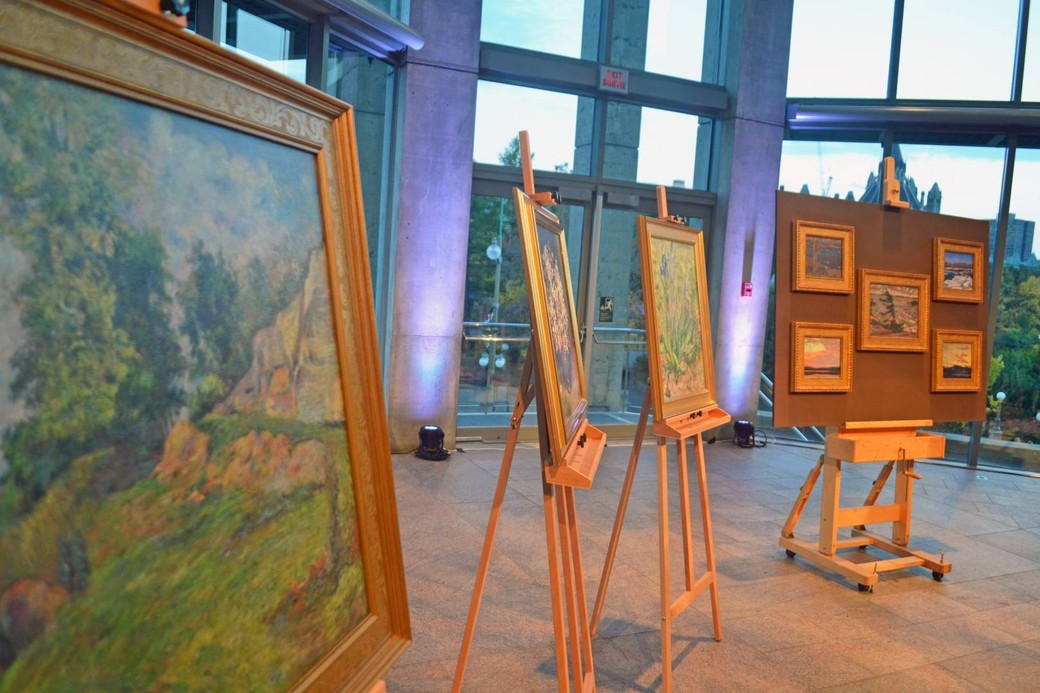
Now You Can Touch a Van Gogh Thanks to Verus Art
All photos by Isabel Payne.
Ever loved a painting so much that you wanted to feel each brushstroke? Now you can thanks to advanced 3D scanning and printing technology. Unveiled last night at the National Gallery of Canada were 3D printed reproductions from Verus Art so real that each brush stroke was exact to the artist’s original. Verus Art is a collaboration between Vancouver-based Arius Technology, Océ, a leader in digital imaging, and framing powerhouse Larson-Juhl. What started off as a science project in the conservation of art, transformed quickly into a game-changer in the art production industry.

Verus Art is the first in the world to use this advanced technology to create art reproductions with a belief they can change the multi-billion dollar art reproduction industry. Instead of buying a reproduction from another artist, where the painting is merely their own impression of what the original artist intended, you can now purchase an exact replica with the artist’s original intentions in each movement of their brush stroke. The scan of the original painting can measure the surface down to an incredible 10 microns, meaning that they can get every detail of the painting such as the depth of the brush stroke and even cracks, big or small, which appear in the paint over time.
Over the past year, Verus Art has been working closely with the National Gallery of Canada to scan, digitize, and recreate 12 paintings from famous artist such as Vincent van Gogh, Claude Monet as well several works from the Group of Seven including paintings by Tom Thompson and Frederick Varley. These scans pick up every detail of the painting including depth of stroke and colour, and can be used by participating museums to conduct in-depth studies of the masterpiece. Marc Mayer, Director and CEO of the National Gallery of Canada began his speech last night commenting how it is both “exciting and scary” when he sees the reproductions and how he is “quite staggered” by this technology.

Mr. Mayer also announced last night that these reproductions will be used as a part of the NGC’s educational outreach programs for distance learning. They will be sent to schools where students can learn about the artworks up-close and personal, rather than through a screen or 2D print. Now teachers can show them something they can actually touch. These 3D reproductions also hold huge potential in connecting the visually-impaired with artwork that extends far beyond a verbal description.
These works were so stunningly accurate that my friend and art-enthusiast believed at first that the originals were actually being showcased. “I actually thought they were real and I was like ‘where are the 3D prints?’” She said. “I felt privileged to be able to see these works up close and be able to actually touch them.”
“I actually thought they were real and I was like ‘where are the 3D prints?’” She said. “I felt privileged to be able to see these works up close and be able to actually touch them.”

The National Gallery of Canada will receive royalties from each sale of a 3D reproduction which will go towards these educational programs. Art enthusiasts who lack the several million dollars to purchase an original Van Gogh can now buy an exact reproduction ranging from $4,000 upwards. Purchases can be made at the NGC or online on the Verus Art website.
After spending the evening marveling at the exactness and beauty of these reproductions, it occurred to me that this showcase will likely be one of the only times I’m told to “please feel free to touch the Van Gogh.”






